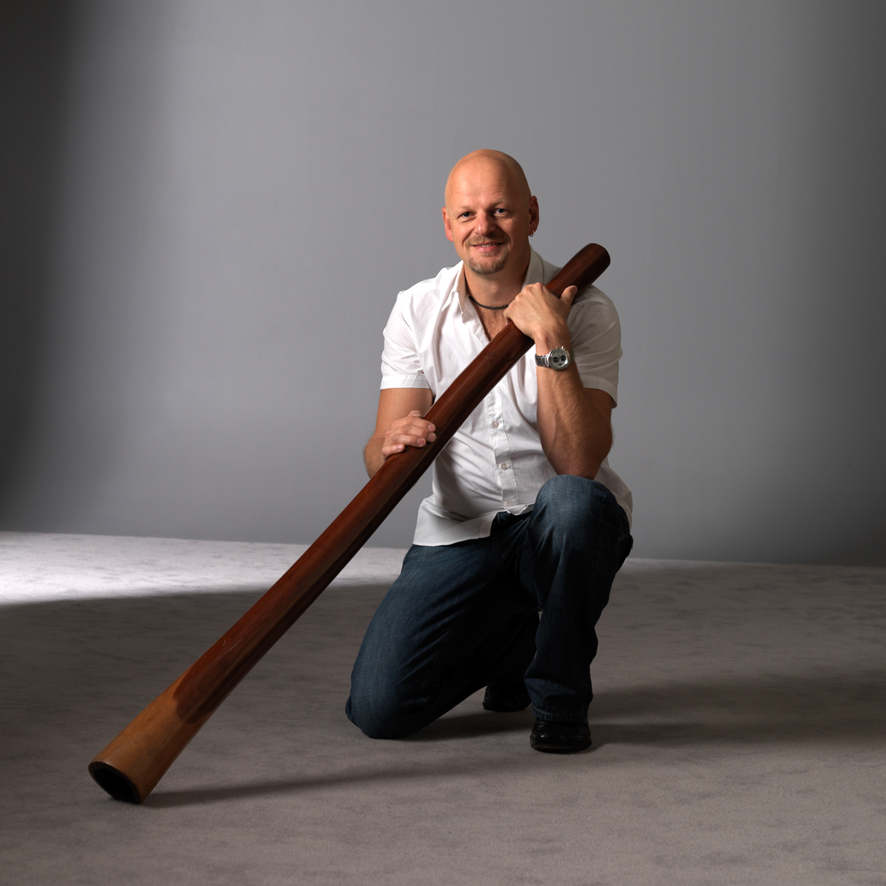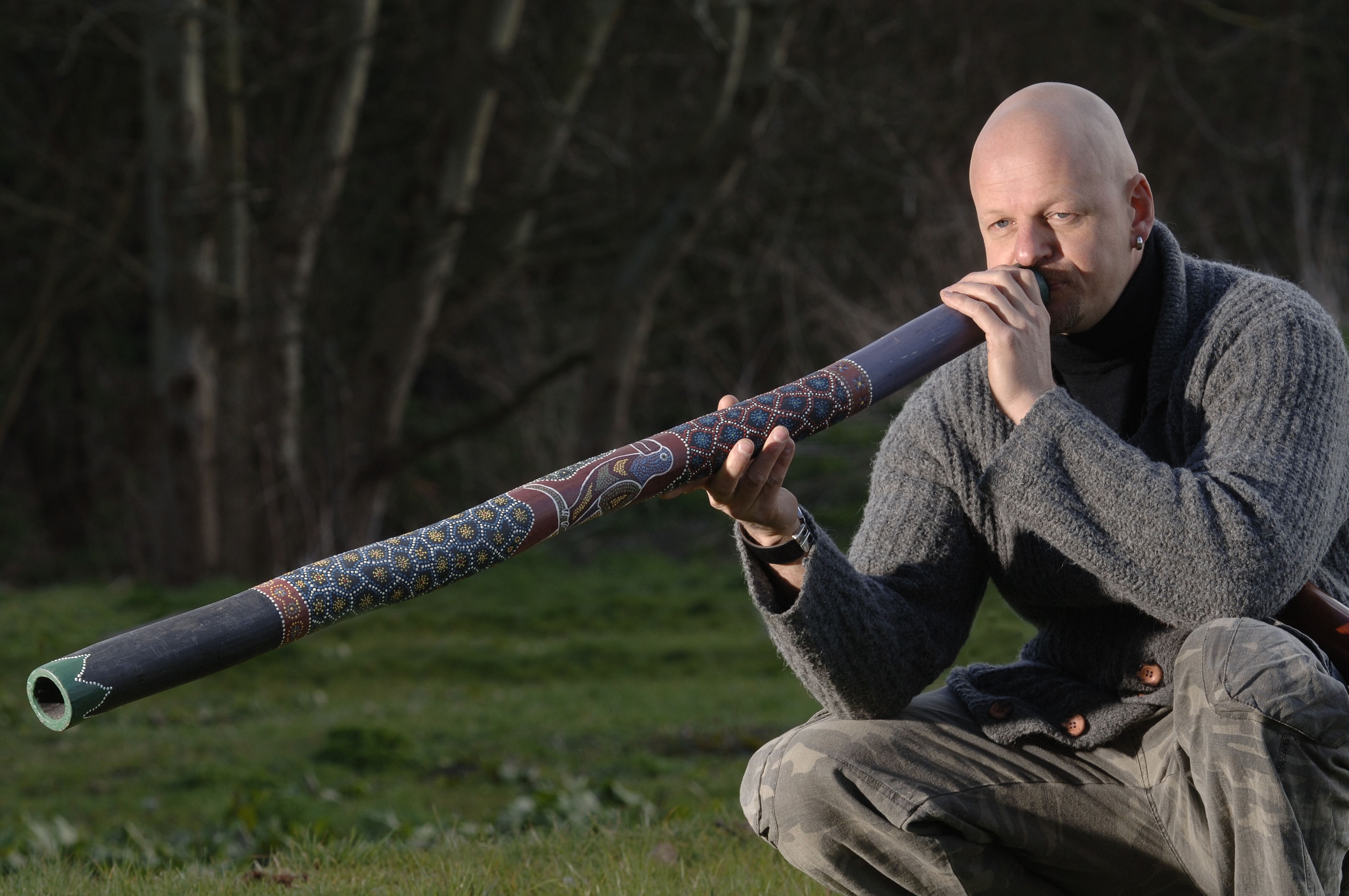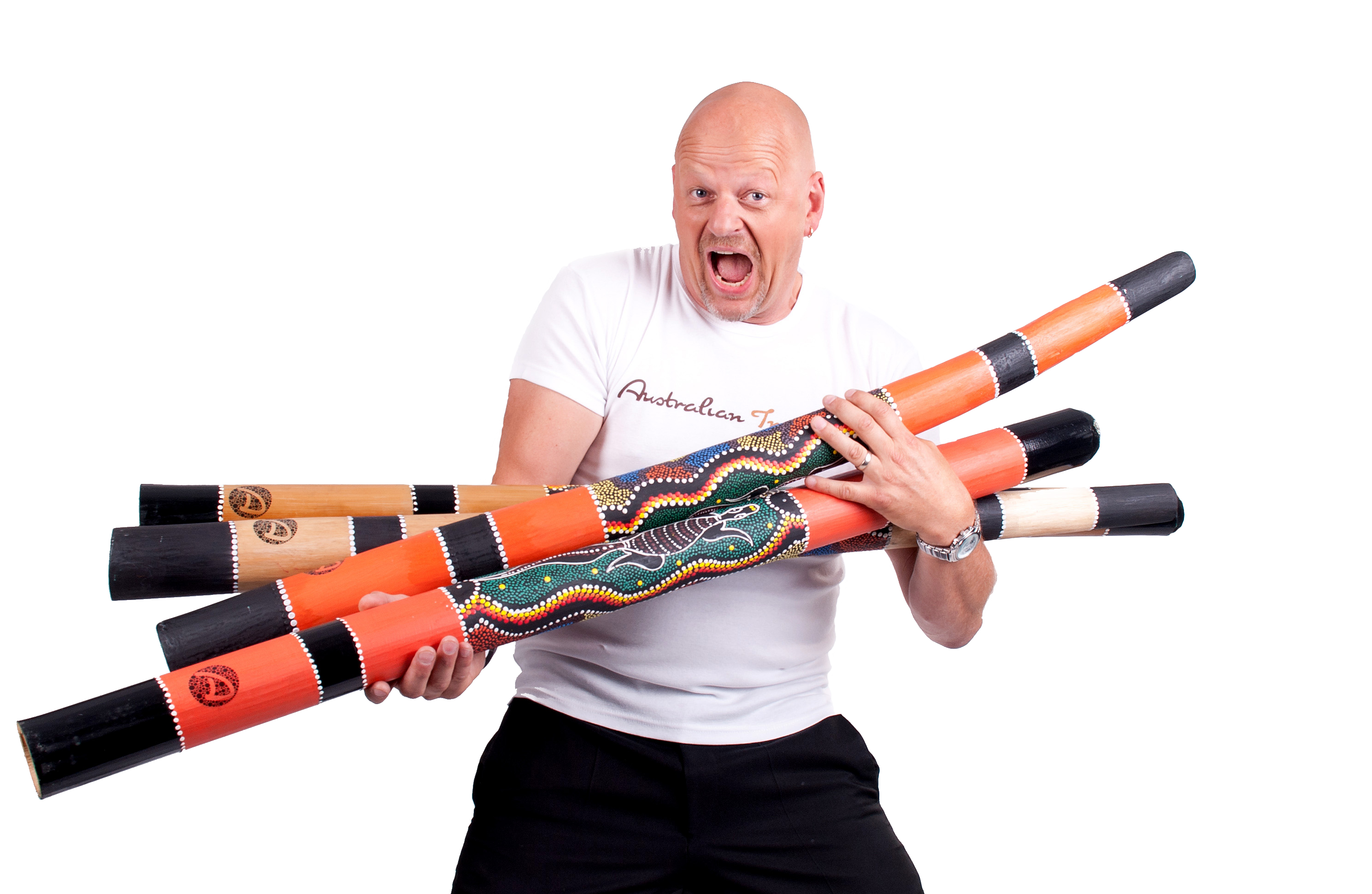
Australian Treasures in 1 minute!
Watch 3 Free Lessons Now!
Not convinced yet? Click hier to take 3 free lessons with no obligation.
No account needed!
Who am I?
I am Niels de Lang, musician - raised in the countryside, born in Amsterdam in 1966. For decades, I have taken great pleasure in introducing as many people as possible, young and old, to the didgeridoo.
How? By making making making music on this instrument as simple and fun as I can and making the didgeridoo accessible and affordable
Because the more people experience pleasure and satisfaction on this amazing instrument, the more positive impact we can have on the world together.
Music and happy people have more to offer the world.
You happy = we happy. Simple.
My life
I live in Hoorn, a beautiful, small town near the IJsselmeer and not without reason....
I love water sports such as kitesurfing, windsurfing, swimming and sailing. Being near or on the water gives me a wonderful feeling of freedom and connection with nature. The nice thing is that my children also share these passions.
I live minimalistic and care not much for luxury. Just give me a bus camper to drive into adventure. That makes me happy.
By seeking a good balance in what I do as much as possible, I experience a pleasant peace in my life. This helps you make better choices and also keeps you a nice person for others.
The didgeridoo has certainly helped me to find that balance.
What I do
Since 1990, I have inspired hundreds of thousands of people by making music and giving workshops and courses on the didgeridoo. I am still active with my bands as a didgeridoo player and guitarist and have played at numerous festivals and theatres at home and abroad.
Besides lessons and workshops for schools and companies, in 2004 I successfully developed the one-day workshop Didgeridoo & Circular Breathing for beginners, snorers and (sleep) apnoea patients.
Tens of thousands of people use the didgeridoo as an alternative way to relieve symptoms such as snoring, apnoea, hyperventilation and shortness of breath and to contribute to their own health & well-being. Everyone wants to live a healthy life.
So there are GPs, therapists, ENT and pulmonologists who refer their (apnoea) patients to Australian Treasures' one-day workshops. Because it works.
With a global brand, Australian Treasures is a leader in everything to do with the didgeridoo and playing the didgeridoo. Of course fair-traded because that makes us and the world better off!


My Inspiration
As a child, partly due to musical parents, I was already into music, playing songs on the ukulele by the age of 6. Then guitar and didgeridoo followed. Since then, music has always been the common thread in my life. I found it fascinating that making music never gets boring and that it can greatly enrich your life and the lives of others.
I get my inspiration from good listening, music, piles of books and biographies, but mostly by getting started and experimenting myself.
Then I find out which things work best, and try to shape those techniques according to my own understanding.
Because the better it works, the more results you get.
Why make it difficult when it can be easy
How do we make learning something new fun and effortless?
At Australian Treasures, we learn, no nonsense, in small, clear steps. That way, we bypass impatience and get more done with less effort.
Soon you get into the right flow and enjoy the progress. How wonderful is that!


Frequently asked questions
Read our frequently asked questions. Get in touch if you can't find your question!
-
How long will the online course take?
The total length of the online course is over 40 minutes and covers as many as 24 lessons in it. 13 lessons relate to playing the didgeridoo and 11 lessons on circular breathing.
How long does it take to learn circular breathing
The circular breathing technique can be learnt in a few days. To keep exercising the throat muscles, 10 minutes of exercise a day is enough mastered?
Why is the didgeridoo important to aboriginal culture?
The didgeridoo is an Aboriginal instrument that has traditionally been important in Aboriginal ceremonies. The didgeridoo was mainly part of the Aboriginal culture to tell their stories and to get in touch with the spirit world.
-
Do I need to buy a didgeridoo for the online workshop?
If you already own a didgeridoo you do not need to buy one. Sometimes your own didgeridoo may not blow properly because of a bad or old mouthpiece or the didgeridoo may be faulty without you noticing. Then blowing a note won't work either. For a relatively low fee, you can buy a whole new didgeridoo from the online course with a special package discount and be sure to blow a good didgeridoo!
Is the didgeridoo the same as other wind instruments?
The didgeridoo is different from other wind instruments. -You blow through a large opening and have to give resistance with your mouth/lips. -The didgeridoo has 1 tone, it is not a melody (wind) instrument. -On the didgeridoo you use the circular breathing technique. -The didgeridoo produces many more vibrations than other wind instruments
Where can I buy a beginner didgeridoo and the course?
When purchasing the didgeridoo lessons, you can also purchase a didgeridoo and, for example, a didgeridoo bag. This will be sent to your address together with the login code for the course! The course is available in no less than 7 languages and we ship the course and didgeridoo worldwide! You can purchase the course at workshops.australiantreasures.com
-
How long does it take to master circular breathing?
That is different, but with regular practice you can learn circular breathing within a few days.
Can anyone learn circular breathing?
Yes, everyone young and old can learn circular breathing.
Where does the didgeridoo come from?
The didgeridoo, pronounced didzjeriedoe, is a wind instrument, best known from Australia where the Aboriginal people in Northern Australia (Northern Territory) have been playing the instrument for thousands of years.
What did others think?
Our workshops have helped many people with
circular breathing and have been able to reduce snoring as a result.
-
-
Perfect material, fast delivery....top quality. Already recieved my tirth order and there are more orders in the near future. Wonderful and very service.
Marc Mebis -
Didgeridoo ordered and received in only 37 hours.
Great sound
Thank you Australian Treasures
Sam Kempinaire -
Totally satisfied with the instrument, from the manufacture to the sound it produces. Excellent for learning, go for it!
Riccardo Presciuttini
-
-
-
Practising outside in the garden, I suddenly had an audience of 2 little birds, they didn't stay long, circular blowing through a straw is going great and it's already going smoother and better through the didgeridoo. Thanks Niels, your workshop provides a simple, effective approach that works very well and it feels healthy, didgeridoo playing.
Greetings, Heleen (participant of the one-day workshop) -
Nice didges. Got four, two from other sellers and two from Australian Treasures. It's a heavy piece of wood (the one on the far left is from Australian Treasures, new. The second from the right also. The one one the far right is bamboo. The two on the left eucalyptus and the one with the colouring.. I am not sure, but it's quite light)
Pieter Rodgers -
Ok, it was a bit late at night, but I just nearly blew myself into a wonderful trance. Call it didgeridoo meditation. For longer and longer. . . Great!
Greetings Tom (one-day workshop participant)
-
-
-
Hi all, how nice that there are so many didge fans! I've been doing it for six months now and it's going really well. I even have a bucket of water with PVC pipe next to my bed so I can practice circular breathing every day... I am still very grateful that I did the Didgeridoo & Circular Breathing workshop with Niels.
Sharon (participant one-day workshop) -
Good professional information about the products. I bought a travel didge and a didge box. Both are fine. Please note that you have to breathe them in a little before they run smoothly. Circular breathing is therefore very easy to do. I decorated the box with art. Makes it slightly different.
Did Gro -
Participated in one of the workshops. Was a great experience!
Willy Veld (participant in one-day workshop)
-


